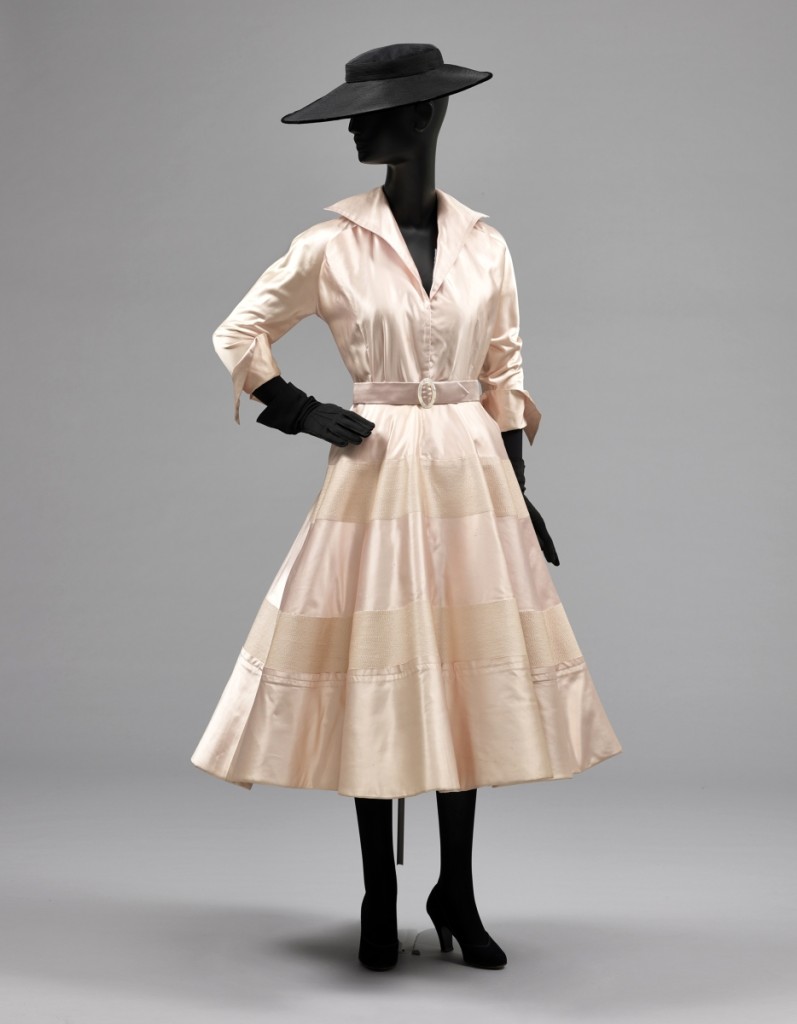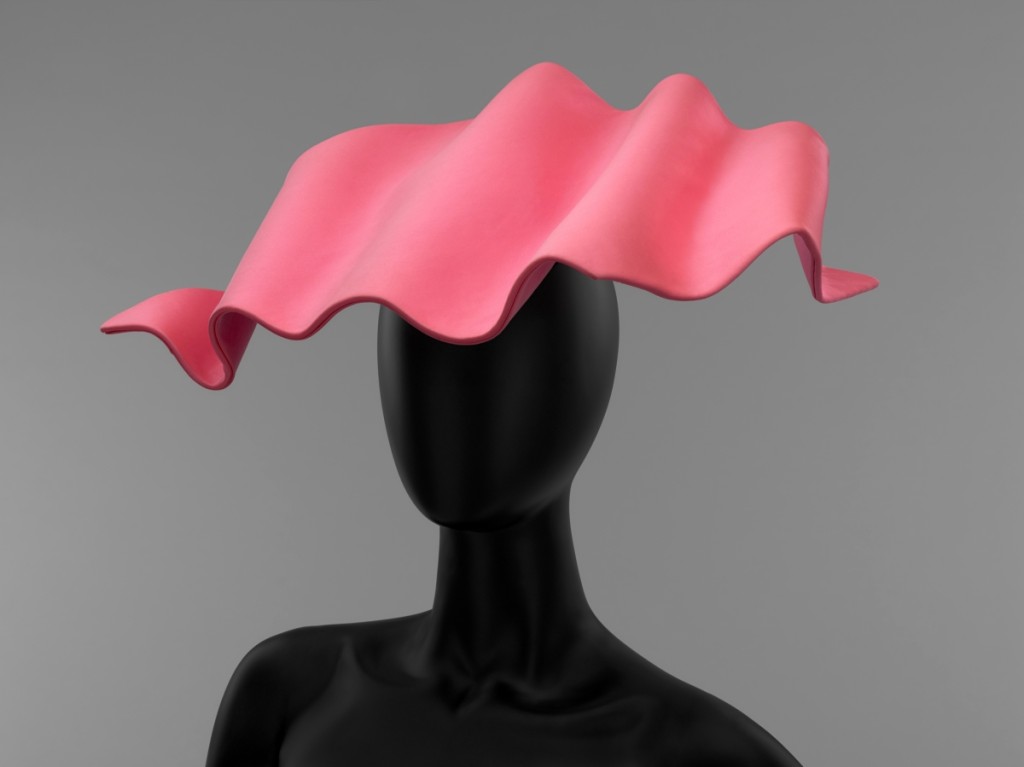PHILADELPHIA – More than seven decades of style will be displayed in “Fabulous Fashion: From Dior’s New Look to Now,” a major exhibition highlighting creativity and glamour at the Philadelphia Museum of Art. The haute couture and ready-to-wear garments and accessories on view range in date from 1947 – the year of the introduction of Christian Dior’s revolutionary “New Look” – to recent ensembles by audacious designer Bernhard Willhelm. Featuring some of the most significant and visually compelling works from the museum’s renowned collection of costumes and textiles, “Fabulous Fashion” presents many new acquisitions and other outstanding works, exhibited rarely if ever before. Opening October 16, the exhibition will run through March 3.
“Fabulous Fashion” includes such iconic works as Adrian’s 1947 velvet “winged victory” gown, an understated black and white 1972 Chanel suit, and Geoffrey Beene’s 1994 silver lamé “Mercury” dress. Radical design is exemplified by Paco Rabanne’s dress made of plastic discs linked by metal rings and a punk-inspired ensemble by Zandra Rhodes from her 1977-78 “Conceptual Chic” collection.
Focusing on fashion as an art form, the exhibition is arranged thematically to explore designers’ creative use of color and pattern, shape and volume, draping, metallics, bridal traditions and innovations and exquisite embellishments. Works will be grouped together to offer striking visual comparisons and demonstrate the relentlessly creative spirit of fashion.
A pair of ensembles from 50 years apart opens the exhibition, each embodying fashion-forward dressing for its time. Dior’s two-piece pale pink satin day dress from 1948, with a nipped-in waist and full skirt that epitomizes the ultra-feminine “New Look,” contrasts with a flirtatious hot pink fur-collared wool suit designed in 1998 by John Galliano for the house of Dior.

Woman’s Dress: Bodice and Skirt, Spring 1948, designed by Christian Dior. Philadelphia Museum of Art: Gift of Dora Donner Ide in memory of John Jay Ide.
A dramatic section of the exhibition features magnificent ball gowns and other evening wear to illustrate the inspired use of shape and volume. This features masterworks by Pierre Cardin, whose extraordinary sculptural designs from the 1980s and early 1990s reflect his background in architecture, as well as dresses with voluminously ruffled skirts by Jean Dessès, 1957; Roberto Capucci, 1985; and Oscar de la Renta, 2007. Two flamenco-inspired dresses – one designed by Cristóbal Balenciaga in 1951 and the other by Patrick Kelly in 1988 – reflect how each designer’s unique heritage informed the reinterpretation of a traditional form.
Stimulating juxtapositions are presented throughout the installation. Gold embroidered net, for example, is used by Anne Fogarty in a strapless evening dress – designed to flaunt an 18½-inch waist – that reflects the 1950s ideal of femininity (articulated in the designer’s 1959 book, Wife Dressing: The Fine Art of Being a Well-Dressed Wife). In contrast, a gold lamé mini dress from the late 1980s by Vicky Tiel exudes glamour, sensuality and strength.
A selection of bridal gowns that combine tradition and innovation includes Pierre Balmain’s luxurious 1959 creation of ivory chiffon with silk and silver damask, Vera Wang’s 1999 custom-made satin gown with an opulent embroidered bodice and Carolina Herrera’s 2012 strapless design with a bustled back skirt unexpectedly striped in gold, silver and grey. Grace Kelly’s wedding headpiece and shoes, as well as her bridal manual, all covered with lace and accented with seed pearls, are also featured in this section.
The museum is at 2600 Benjamin Franklin Parkway. For information, 215-763-8100 or www.philamuseum.org.












